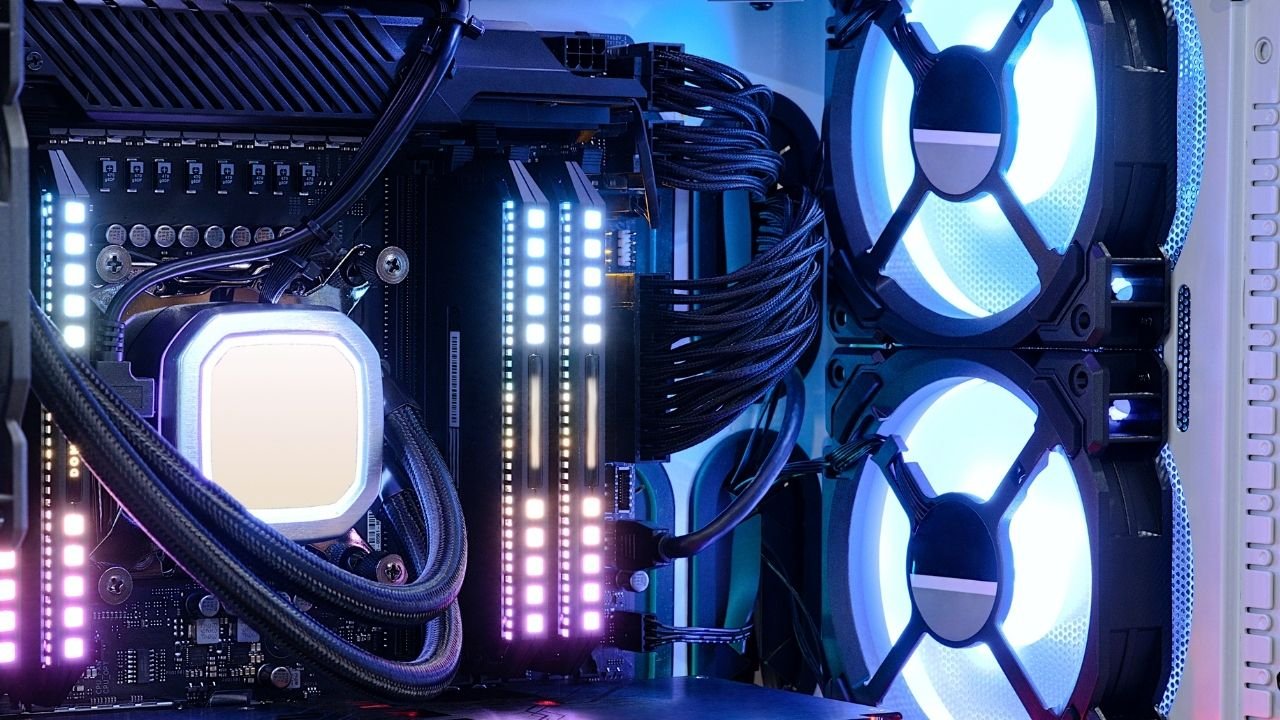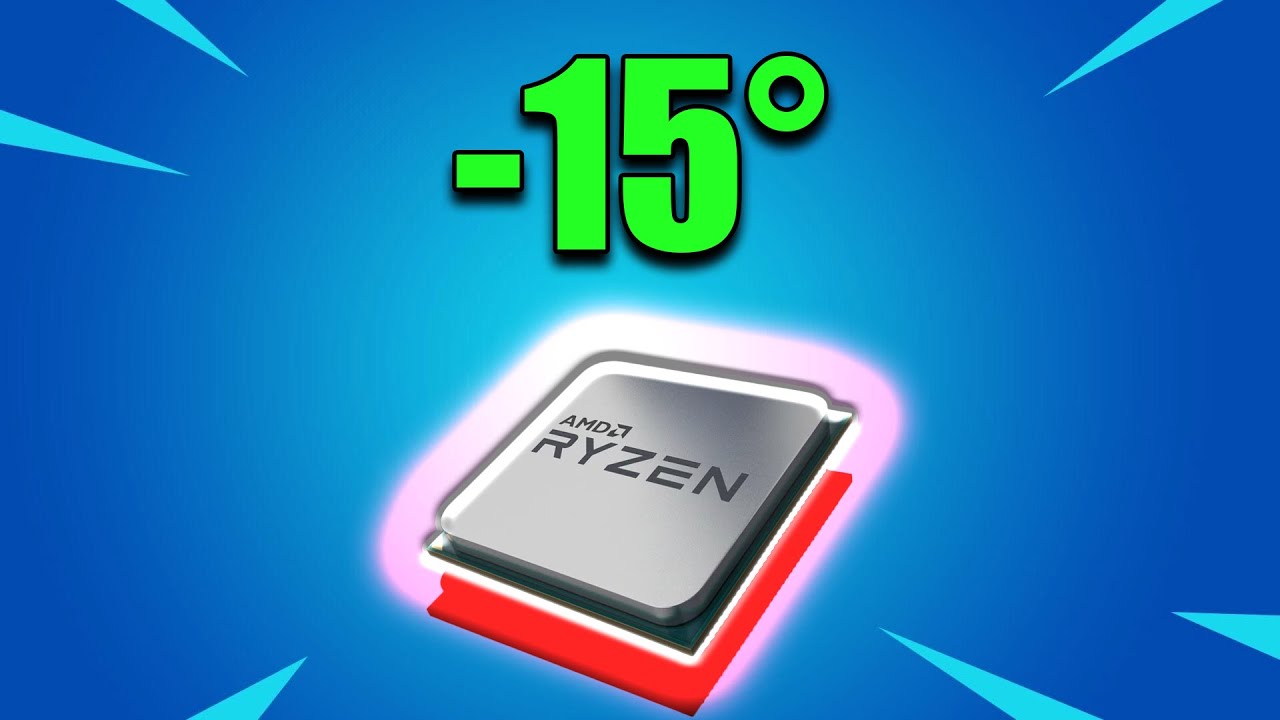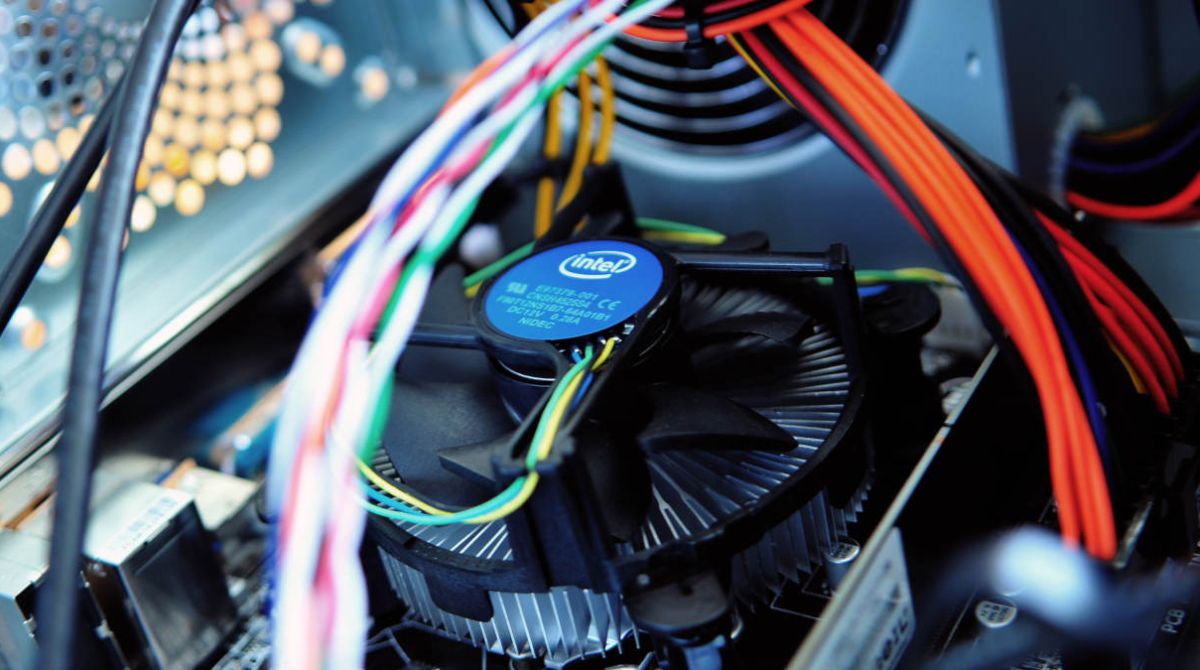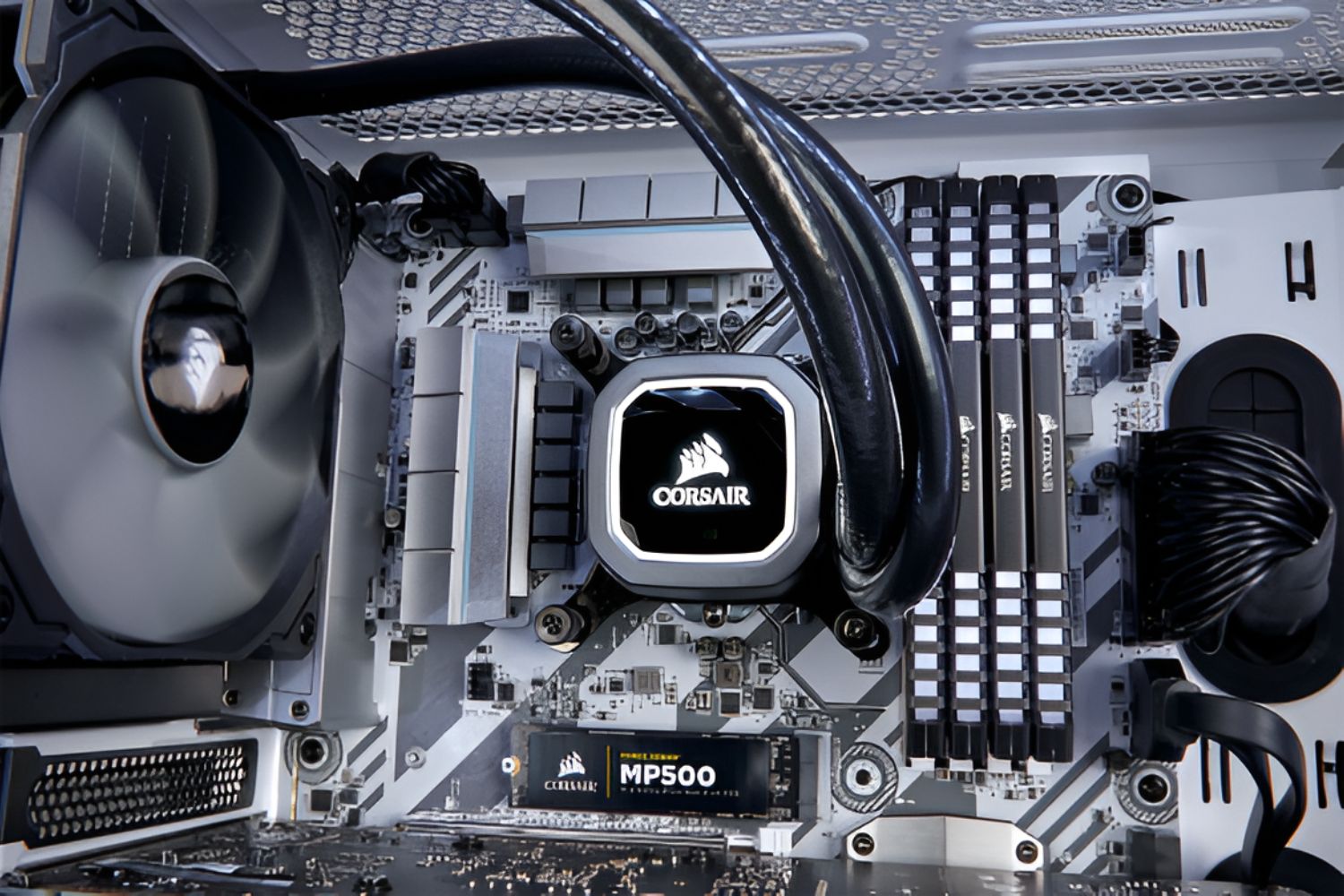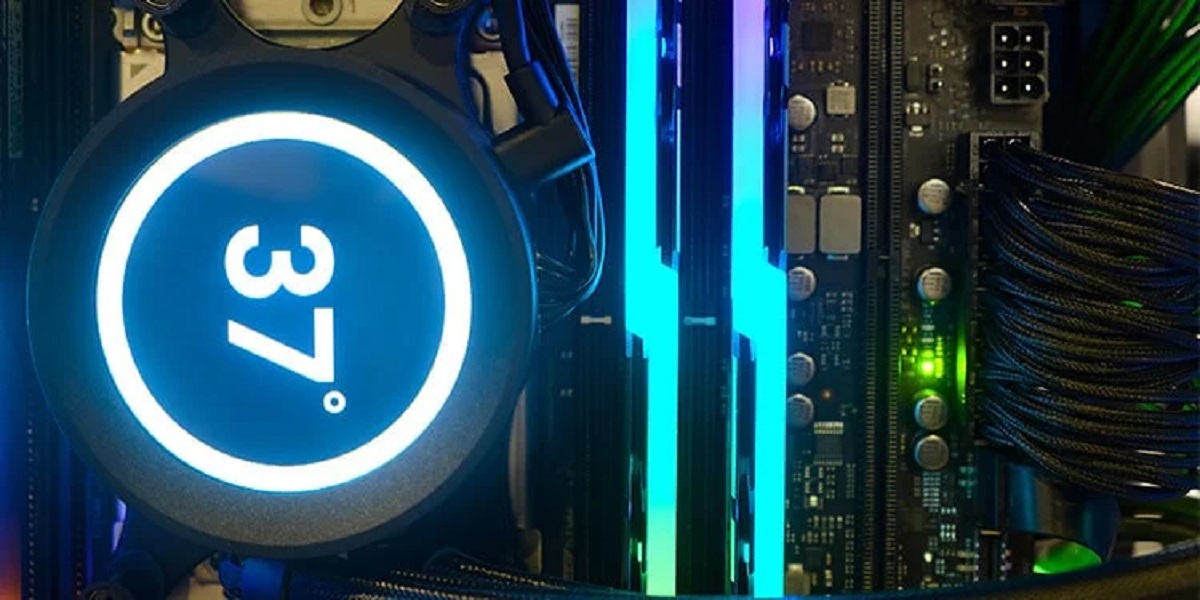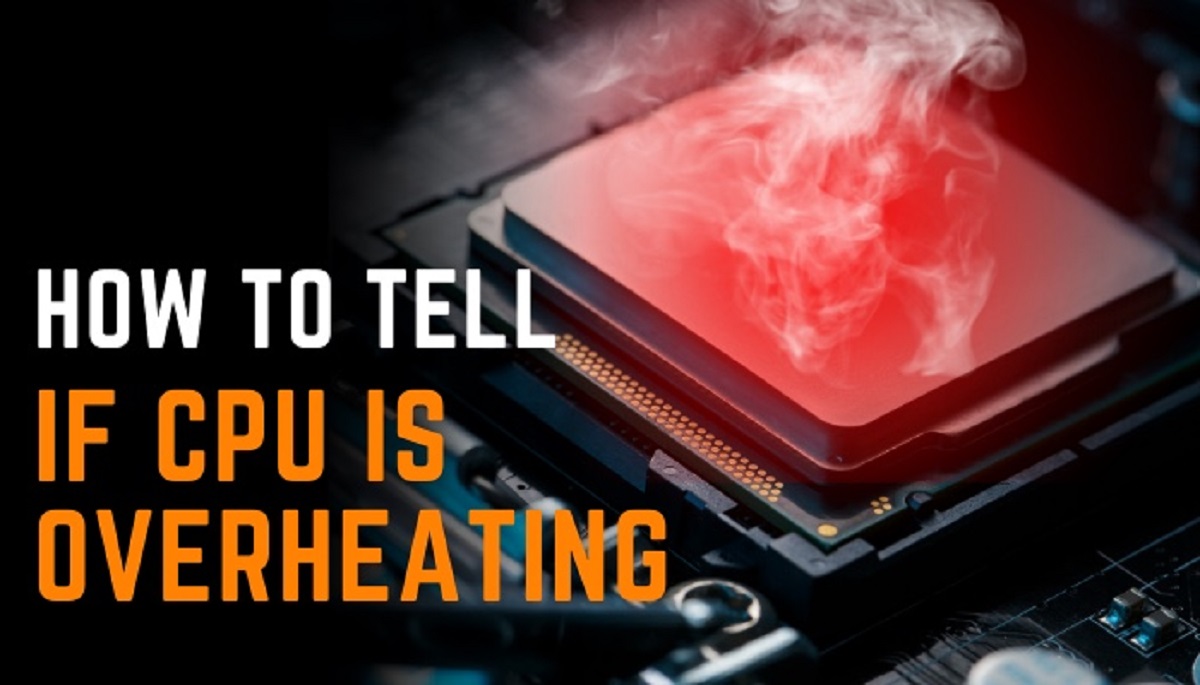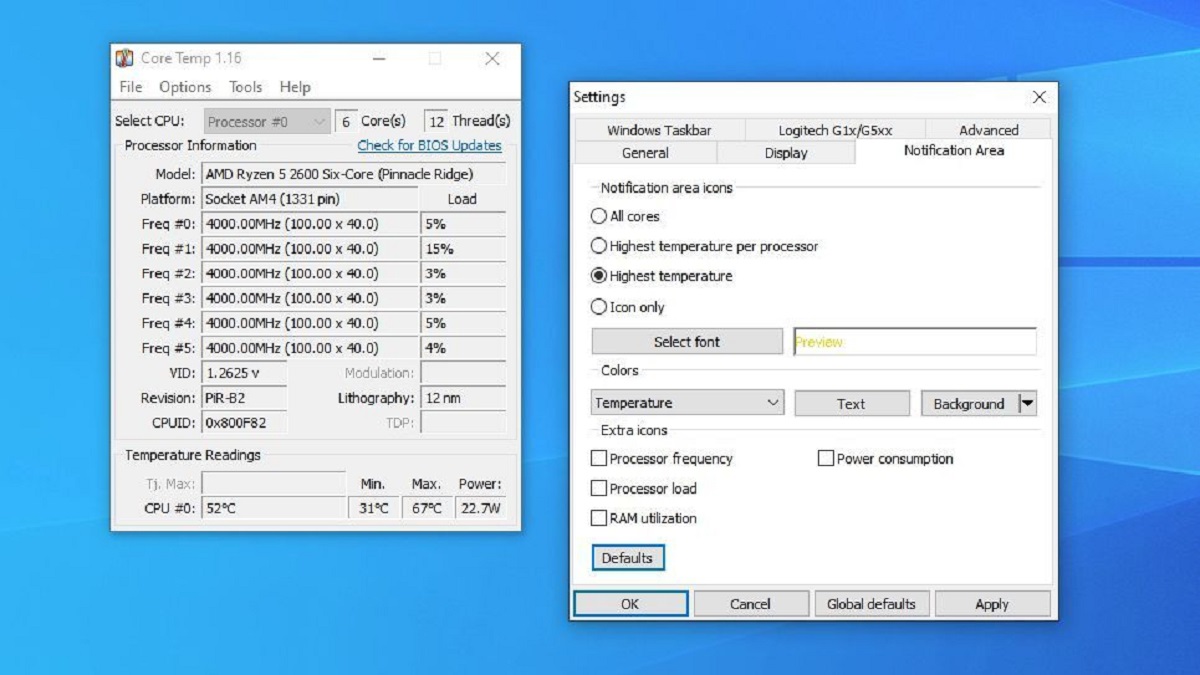Introduction
Welcome to the world of computer hardware cooling, where the battle against high temperatures is fought tirelessly. One crucial component in this battle is the case fan. If you’re wondering how much a case fan can help lower your CPU temperature, you’ve come to the right place.
A case fan, also known as a chassis fan, is a cooling device that helps regulate the temperature inside your computer case. It works by circulating air and dissipating heat generated by the CPU, graphics card, and other components.
The CPU, or central processing unit, is the brain of your computer. It performs millions of calculations per second, which generates a significant amount of heat. To prevent overheating and potential damage to your CPU, it’s essential to keep it at a safe operating temperature.
Several factors can affect CPU temperature, including the power and efficiency of your CPU cooler, ambient room temperature, and the workload placed on your CPU. However, one of the most significant factors is the airflow inside your computer case, which is where the case fan comes into play.
Proper airflow is crucial for maintaining a cool and efficient system. It helps prevent hot spots, allows for faster heat dissipation, and overall improves the lifespan and performance of your computer components, including the CPU.
Adding a case fan to your system can have several potential benefits. It can help reduce CPU temperature, improve system stability, increase the lifespan of your components, and even potentially improve overclocking capabilities.
So how many case fans do you need? The answer will depend on various factors such as the size of your case, the heat output of your components, and your desired level of cooling. We will explore this topic in more detail later in the article.
Choosing the right case fan for your CPU is also crucial. Factors such as size, airflow, noise level, and static pressure should be considered to ensure compatibility and optimal performance.
In this article, we will delve into the world of case fans and explore how they can help cool your CPU. We’ll discuss the impact of case fan placement, the importance of airflow in your computer case, and explore the potential benefits of adding a case fan to your system. By the end of this article, you’ll have a better understanding of how a case fan can make a significant difference in managing CPU temperatures and maintaining a cooler and more efficient system.
What is a case fan?
A case fan, also known as a chassis fan or cooling fan, is a vital component in a computer system designed to regulate the temperature inside the computer case. It consists of a small motor that rotates fan blades, creating airflow and dissipating heat generated by the internal components.
Case fans are typically placed in strategic positions within the computer case to ensure proper airflow. They come in various sizes, including 80mm, 120mm, and 140mm, with larger fans generally providing better performance and airflow.
These fans are connected to the motherboard, either directly or through a fan controller, and are powered by the computer’s power supply unit (PSU). They can be controlled manually or automatically by the motherboard’s temperature sensors, adjusting the fan speed according to the system’s temperature.
The main purpose of a case fan is to improve the thermal management of the computer system, particularly the CPU and other components that generate a substantial amount of heat. By increasing airflow and expelling hot air, case fans help maintain lower temperatures and prevent overheating.
In addition to the CPU, case fans also assist in cooling the graphics card, memory modules, and other components that can get hot during operation. They work in conjunction with the CPU cooler, which is responsible for directly cooling the CPU, but the case fan helps in removing the hot air generated by the CPU cooler.
By reducing the temperature inside the computer case, case fans play a crucial role in enhancing the overall system’s stability, improving the longevity of the components, and even potentially boosting performance. Cooler temperatures also allow for more efficient operation and can prevent thermal throttling, where the CPU reduces its clock speed to prevent damage from excessive heat.
Furthermore, case fans can contribute to a quieter system by facilitating better cooling. Effective airflow circulation reduces the need for higher fan speeds, resulting in reduced noise levels. However, it is important to consider the noise generated by the fans themselves, as some models may produce more noise than others.
Overall, case fans are an integral part of any well-designed computer system. They help maintain optimum temperatures and improve the overall performance and longevity of the components. In the next section, we’ll delve deeper into how case fans aid in cooling the CPU and the factors that can affect CPU temperature.
How does a case fan help cool the CPU?
A case fan plays a crucial role in cooling the CPU by aiding in the removal of hot air from the computer case and promoting better airflow. By increasing the air circulation inside the case, it helps dissipate the heat generated by the CPU and other components.
When the CPU operates, it generates a significant amount of heat. The CPU cooler, which consists of a heatsink and a fan, directly cools the CPU by transferring the heat from the CPU to the heatsink and expelling it using airflow created by the fan. However, this process alone may not be sufficient to maintain optimal CPU temperatures.
This is where the case fan comes into play. Positioned strategically in the case, the case fan helps expel the hot air produced by the CPU cooler and other components. It creates a continuous flow of fresh air, allowing the cooler air to enter and the hot air to exit the case.
The hot air rises naturally due to convection, but without proper airflow, it may get trapped within the case, leading to the accumulation of heat. The case fan helps prevent such hot spots by facilitating the movement of air through the case, ensuring that the hot air is swiftly expelled.
The placement of the case fan is crucial for its effectiveness in cooling the CPU. Typically, case fans are installed at the front and rear of the case, creating a front-to-back airflow pattern. The front fan draws in cool air from outside the case, while the rear fan expels the hot air out.
Some computer cases also have additional fan mounting positions at the top, side, or bottom, allowing for more customization in airflow depending on the specific case and component layout. This enables users to create a balanced airflow pattern that optimally cools the CPU and other components.
By efficiently removing hot air from the case, a case fan helps maintain lower CPU temperatures, which is vital for the overall performance and longevity of the CPU. High temperatures can lead to thermal throttling, where the CPU reduces its speed to cool down and prevent damage. This can result in decreased performance and system instability.
In addition to CPU cooling, a case fan also assists in cooling other components such as the graphics card, memory modules, and storage drives. By promoting better overall airflow, it contributes to a more stable and reliable computer system.
In the next section, we will discuss the various factors that can affect CPU temperature and how the placement of case fans can have a significant impact on cooling efficiency.
Factors affecting CPU temperature
Several factors can influence the temperature of your CPU, and understanding these factors is vital for effective cooling. By addressing these factors, you can better manage CPU temperatures and optimize the performance and lifespan of your computer system.
1. CPU Power and Efficiency: The power and efficiency of your CPU play a significant role in its temperature. Higher-power CPUs generally generate more heat, while more efficient CPUs can operate at lower temperatures. Overclocking, or running the CPU at higher clock speeds than the manufacturer’s specifications, can also increase heat output.
2. Cooling Solution: The efficiency and effectiveness of your CPU cooling solution directly impact CPU temperature. The CPU cooler, which includes a heatsink and fan, is responsible for directly cooling the CPU. Upgrading to a more efficient cooling solution, such as a high-performance CPU cooler, can significantly reduce CPU temperatures.
3. Ambient Temperature: The ambient temperature in the room where your computer is located can affect CPU temperature. Higher room temperatures will make it more challenging for the CPU cooler and case fans to dissipate heat effectively. Ensure that your computer is in a well-ventilated location with adequate airflow and a moderate room temperature.
4. Workload and Usage: The workload placed on your CPU can impact its temperature. CPU-intensive tasks, such as running demanding software, playing graphically-intensive games, or rendering videos, can increase the heat output of the CPU. Monitoring CPU usage and adjusting the cooling accordingly can help manage temperature spikes.
5. Thermal Paste: The quality and application of thermal paste between the CPU and the heatsink can affect heat transfer. Poorly applied or dried-out thermal paste can impede heat dissipation, resulting in higher CPU temperatures. Regularly checking and replacing the thermal paste can help maintain optimal performance.
6. Overcrowded Case: The layout and configuration of your computer case can impact CPU temperature. An overcrowded case with poor cable management can restrict airflow, leading to higher temperatures. Ensuring proper cable routing and having sufficient space inside the case for airflow can help improve cooling efficiency.
7. Case Fan Placement: The placement and configuration of case fans can have a significant impact on CPU temperature. Strategic placement of case fans, such as having intake fans at the front for cool air and exhaust fans at the rear for expelling hot air, can enhance airflow and lower CPU temperatures. Adding additional case fans or upgrading existing fans can further improve cooling efficiency.
By considering and addressing these factors, you can effectively manage CPU temperatures and ensure that your computer system operates at optimal levels. In the next section, we will discuss the impact of case fan placement and its importance in maintaining proper airflow within the computer case.
The impact of case fan placement
The placement of case fans within your computer case can have a significant impact on cooling efficiency and overall system temperature. Proper case fan placement ensures adequate airflow, which helps in maintaining lower CPU temperatures and optimal performance.
1. Front Intake Fans: Placing case fans at the front of the case allows for efficient intake of cool air from the outside. This cool air is directed towards the components, including the CPU, providing a fresh supply of air to cool them down. Front intake fans help prevent hot air buildup, especially in cases with restricted front ventilation.
2. Rear Exhaust Fans: Installing one or more case fans at the rear of the case helps in expelling hot air generated by the CPU and other components. The rear exhaust fans create a pathway for the hot air to escape, preventing it from lingering inside the case and causing overheating. The hot air is pushed out of vents located at the rear of the case.
3. Top, Side, and Bottom Fans: Some computer cases offer additional mounting positions for case fans on the top, side, or bottom. The placement of these fans can facilitate better airflow depending on the specific configuration of your components and the airflow dynamics of your case design. For example, top fans can extract warm air that naturally rises, while side fans can provide extra cool air intake.
4. Push-Pull Configuration: Another effective case fan placement technique is the push-pull configuration. This involves installing one fan as an intake and another as an exhaust on the same heatsink or radiator. This setup creates a continuous flow of air over the component, ensuring efficient cooling. Push-pull configurations are commonly used in CPU cooling systems and liquid cooling setups.
5. Balanced Airflow: Achieving a balanced airflow is essential for maintaining proper cooling within the computer case. This means ensuring a steady intake and exhaust of air. Having more intake fans than exhaust fans can lead to positive air pressure, which can help prevent dust buildup but may hinder airflow. On the other hand, having more exhaust fans can result in negative air pressure, causing air to be drawn in through unfiltered openings.
6. Cable Management: Proper cable management is often an overlooked aspect of case fan placement. Poorly organized cables obstruct the airflow inside the case, leading to increased temperatures. Ensuring that cables are neatly routed and secured away from fan blades and component airflow paths can significantly improve cooling efficiency.
By strategically placing case fans and considering the configuration of your computer case, you can optimize airflow and enhance cooling performance. It is important to note that the impact of case fan placement may vary depending on the specific case design and components used. Experimenting with different fan configurations may be necessary to find the most effective setup for your particular system.
In the next section, we will explore the importance of airflow in a computer case and how it contributes to overall cooling effectiveness.
The importance of airflow in a computer case
Adequate airflow within a computer case is crucial for maintaining optimal temperatures and preventing overheating of components, including the CPU. Good airflow enables the efficient movement of air, removing hot air and supplying cool air to critical components. Here’s why airflow is so important:
1. Heat Dissipation: The primary purpose of airflow is to dissipate heat generated by the CPU, graphics card, and other components. These components can reach high temperatures during operation, and without proper airflow, the heat can accumulate inside the case, leading to thermal throttling, reduced performance, and even component failure. Good airflow facilitates the continuous exchange of hot air for cooler air, ensuring effective heat dissipation.
2. Avoid Hot Spots: Inadequate airflow can result in hot spots within the computer case, where hot air becomes trapped around specific components. Hot spots can lead to localized overheating, causing instability and potential damage to those components. By promoting consistent airflow throughout the case, hot spots can be minimized, ensuring a more evenly distributed temperature across all components.
3. Dust Management: Airflow plays a crucial role in managing dust buildup within the computer case. Without proper airflow, dust particles can settle on components, obstructing heat sinks, and impeding heat dissipation. This can lead to increased temperatures and reduced cooling efficiency. Good airflow helps carry away dust and prevents it from settling, keeping components cleaner and cooling performance at its best.
4. Component Longevity: Maintaining lower operating temperatures through proper airflow can contribute to the longevity of your components. High temperatures can result in increased wear and tear, shortening the lifespan of critical components. By ensuring efficient airflow, you can extend the lifespan of your CPU, graphics card, memory, and other components, reducing the risk of premature failure.
5. System Stability: Overheating can lead to system instability, crashes, and unexpected shutdowns. Adequate airflow helps regulate temperatures within a safe range, preventing thermal throttling and maintaining stable operating conditions. By providing a consistent supply of cool air, airflow contributes to a reliable and stable computer system, especially during demanding tasks or extended periods of use.
6. Noise Reduction: Effective airflow can contribute to a quieter system. Proper cooling lowers the demand for higher fan speeds, reducing noise levels. Additionally, better airflow reduces the risk of fans operating at full speed due to increased temperatures, further minimizing noise output. A well-ventilated case with proper airflow management can create a more peaceful computing experience.
To optimize airflow within your computer case, ensure a balanced distribution of intake and exhaust fans. Consider any obstructions that may impede airflow, such as cables or improperly placed components, and make necessary adjustments. Regularly clean and maintain your case and fans to maximize airflow and prevent dust buildup.
In the next section, we will explore the potential benefits of adding a case fan to your system and how it can contribute to better CPU temperature management.
Potential benefits of adding a case fan
Adding a case fan to your computer system can bring several benefits, including improved CPU temperature management, enhanced system stability, increased component lifespan, and potentially better performance. Here are some of the potential benefits you can expect:
1. Lower CPU Temperatures: One of the primary benefits of adding a case fan is better CPU temperature management. By increasing airflow within the computer case, a case fan helps dissipate heat generated by the CPU and other components. This can result in lower CPU temperatures, reducing the risk of thermal throttling, improving performance, and increasing the longevity of the CPU.
2. Improved System Stability: Overheating can lead to system instability, random crashes, and unexpected shutdowns. The addition of a case fan helps maintain lower temperatures, providing a stable operating environment for your computer system. This is particularly important during intense tasks or prolonged periods of use when temperatures can rise significantly.
3. Component Longevity: Excessive heat can shorten the lifespan and reliability of computer components. By adding a case fan and improving airflow, you can actively reduce the risk of component failure due to overheating. Cooler temperatures translate to less stress on critical components such as the CPU, GPU, and memory, increasing their longevity and overall system stability.
4. Enhanced Performance: When your computer operates at lower temperatures, it can potentially perform better. Cooler temperatures help prevent thermal throttling, where the CPU reduces its clock speed to cool down. By maintaining optimal temperatures with the aid of a case fan, your CPU can consistently operate at its maximum potential, delivering better performance in demanding tasks such as gaming, rendering, or content creation.
5. Quieter Operation: In addition to temperature management and performance benefits, the addition of a case fan can contribute to a quieter system. Proper airflow reduces the need for higher RPMs on fans, resulting in reduced noise levels. By optimizing cooling with a case fan, you can strike a better balance between temperature control and noise production, making for a more peaceful computing experience.
6. Dust Reduction: A case fan can help reduce the accumulation of dust within your computer case. With proper airflow, dust particles are less likely to settle on sensitive components, such as heat sinks or fan blades. This can lead to fewer instances of obstructed airflow and improved overall cooling performance. Regular maintenance and cleaning of the case fan can further ensure efficient cooling and reduce the risk of dust-related issues.
Keep in mind that the actual benefits of adding a case fan may vary based on your specific system and configuration. The number and placement of fans, as well as the overall airflow dynamics of your case, can affect the effectiveness of the cooling solution. It’s important to assess your system’s needs and consider the specific requirements of your components when choosing and installing a case fan.
In the next section, we will discuss how to determine the number of case fans you need for your computer system.
How many case fans do you need?
The number of case fans you need for your computer system depends on various factors, including the size of your case, the heat output of your components, and your desired level of cooling. While there is no one-size-fits-all answer, here are some guidelines to help you determine the number of case fans required:
1. Consider the Case Size: The first factor to consider is the size of your computer case. Smaller cases may have limited space for case fan installation, while larger cases usually have more room for additional fans. Assess the available fan mounting positions in your case and determine how many fans can be accommodated.
2. Heat Output of Components: The heat output of your components, especially the CPU and graphics card, plays a significant role in determining the number of case fans required. High-performance CPUs or overclocked processors tend to generate more heat and may require additional cooling. Additionally, high-end graphics cards can also produce a significant amount of heat, necessitating extra case fans to dissipate the accumulated heat.
3. Desired Level of Cooling: Your desired level of cooling and the ambient temperature of the environment where your computer is located should be taken into account. If you live in a particularly hot or humid area or require your computer for intense tasks like gaming or video editing, you may want to have an increased number of case fans to ensure efficient heat dissipation and lower temperatures.
4. Front-to-Back Airflow: A general rule of thumb for optimal cooling is to aim for a front-to-back airflow pattern. This means having intake fans at the front to draw in cool air and exhaust fans at the rear to expel hot air. This creates a natural flow of air within the case. If your case permits, having an equal number of intake and exhaust fans can help maintain this balanced airflow.
5. Additional Case Fan Locations: Some computer cases offer mounting positions for case fans on the top, side, or bottom. These additional fan locations can provide supplementary cooling options and contribute to better airflow management. The decision to populate these additional fan locations will depend on your specific case design and component configuration.
It’s important not to overdo it with case fans as too many fans can disrupt airflow and create conflicting air currents. Beyond a certain point, the benefits of adding more fans may diminish. It’s also worth considering the noise levels associated with multiple fans, as more fans can potentially result in increased noise output.
Lastly, it is recommended to monitor the temperatures of your components using software or hardware monitoring tools. This will help you assess whether your current cooling setup adequately maintains temperatures within the desired range. If you notice consistently high temperatures or potential thermal throttling, additional case fans may be necessary.
In the final section, we will discuss important factors to consider when choosing the right case fan for your CPU.
Choosing the right case fan for your CPU
When selecting a case fan for your CPU, there are several factors to consider to ensure compatibility and optimal performance. Here are some key considerations to keep in mind:
1. Size and Compatibility: The first step is to determine the appropriate size of the case fan that will fit your computer case. Common sizes include 80mm, 120mm, and 140mm. Refer to your case’s specifications or measure the available space to ensure compatibility. Additionally, consider any height restrictions imposed by your CPU cooler or other components near the fan mounting area.
2. Airflow and Static Pressure: Case fans are designed to optimize one of two performance attributes: airflow or static pressure. Fans with high airflow ratings are suitable for situations where unrestricted airflow is important, such as open air test benches. Fans with high static pressure are better suited for scenarios with restricted airflow, such as when air needs to pass through heatsinks or radiator fins. Choose a fan that matches your cooling needs based on the airflow and static pressure requirements of your specific setup.
3. Noise Level: Consider the noise level of the case fan, often measured in decibels (dB). Fans with lower dB ratings are generally quieter, but may sacrifice some airflow or static pressure performance. Choose a balance between cooling performance and noise level based on your preference and the noise tolerance of your environment.
4. Bearing Type: Case fans come with different bearing types, which affect noise levels, durability, and longevity. Common bearing types include sleeve, ball, and fluid dynamic bearing. Sleeve bearings tend to be less expensive but may have a shorter lifespan, while ball bearings are more durable but can be noisier. Fluid dynamic bearings offer a balance between noise level, lifespan, and performance.
5. PWM or Voltage Control: Choose between a fan with pulse-width modulation (PWM) control or voltage control. PWM fans allow for precise fan speed control through the motherboard or a fan controller that supports PWM. Voltage-controlled fans have their speed controlled by varying the voltage supplied to them. PWM fans offer more precise control and flexibility.
6. Brand and Reputation: Consider the brand and reputation of the manufacturer when selecting a case fan. Brands known for their quality and reliable performance, such as Noctua, Corsair, or be quiet!, are generally safe choices. Read reviews and user feedback to get an idea of the fan’s reliability, performance, and customer satisfaction.
7. Additional Features: Some case fans come with additional features such as RGB lighting, anti-vibration mounting systems, or modular cables. These features, while not essential for cooling performance, can enhance the aesthetics and convenience of your system. Consider these extras if they align with your preferences and requirements.
Remember that the choice of case fan will depend on your specific cooling needs, case design, and component configuration. Assess the cooling requirements of your CPU and other components, evaluate your budget, and choose a high-quality case fan that best fits your criteria.
By selecting the right case fan, you can ensure efficient cooling, improved airflow, and optimal performance for your CPU and overall computer system.
Now that we’ve covered the essential considerations for choosing a case fan, let’s move on to the concluding section of this article.
Conclusion
In the world of computer cooling, case fans play a vital role in maintaining optimal CPU temperatures and overall system performance. By promoting airflow and dissipating heat, case fans help prevent overheating, improve system stability, increase component longevity, and potentially enhance performance.
We explored the importance of case fans in managing CPU temperatures, discussed factors that can affect CPU temperatures, and highlighted the impact of case fan placement and airflow within the computer case.
Adding the right number of case fans is essential to maintain proper cooling. Consider factors such as the size of your case, the heat output of your components, and your desired level of cooling to determine the ideal number of fans. Strive for a balanced airflow pattern, ensuring a steady intake and exhaust of air.
Choosing the right case fan involves considering criteria such as size, airflow, static pressure, noise level, bearing type, control method, brand reputation, and additional features. Carefully assess your cooling requirements and select a high-quality case fan that suits your needs and budget.
Remember to regularly monitor your CPU and system temperatures using hardware or software monitoring tools. This allows you to assess the effectiveness of your cooling setup and make adjustments if necessary.
Properly managing CPU temperatures is essential for optimized performance, stability, and the longevity of your computer system. Whether you’re a gaming enthusiast, content creator, or simply a regular computer user, understanding the importance of case fans and implementing effective cooling solutions can significantly impact your computing experience.
By paying attention to the role of case fans in cooling your CPU, you can ensure that your computer system remains reliable, efficient, and performs at its best for years to come.







